Navigating the “valley of death”: Struggles of S’pore deep tech startups in commercialisation

Coined in 2014 by Indian investor and entrepreneur Swati Chaturvedi, the term “deep tech” refers to fundamental discoveries in science and engineering innovations that offer significant advances over existing technologies.
Typically, startups in the deep tech space tend to concentrate on transformative technologies such as artificial intelligence (AI), robotics, blockchain, biotechnology, and quantum computing, with the potential to reinvent the wheel across various industries.
Companies like Intel, Microsoft, and Apple can be seen as precursors to today’s deep tech startups — Intel pioneered the silicon revolution, Microsoft transformed the software industry, and Apple disrupted the smartphone industry. In recent years, companies like SpaceX, aiming for interplanetary colonisation, and DeepMind, are taking up the mantle by pushing the boundaries of AI.
Other than big names like SpaceX and DeepMind, many deep tech startups generally struggle when it comes to commercialising their innovations.
This is because they go through a different evolution cycle as compared to the typical B2B or B2C company — commercialisation generally tends to be more complex and founders are often presented with unique challenges along the way. But what makes this journey to success for deep tech startups so challenging?
A solution in search of a problem
Typically, the development of deep tech startups is deeply tied to the accumulation of research conducted at universities and research institutes. These ventures are usually spin-offs from universities, seeking to solve real-world problems and commercialise the institution’s novel technology or Intellectual Property (IP).
In stark contrast, most conventional startups identify pre-existing market problems and then craft solutions designed to seamlessly tackle these challenges. In other words, they possess a clear understanding of the problem they intend to resolve from the outset.
By taking an opposite approach, these deep tech entrepreneurs often suffer from SISP (a solution in search of a problem), a term coined by Y Combinator, as they zealously pursue the ideal problem that perfectly aligns with their cutting-edge solutions.
However, more often than not, founders attempt to shoehorn a problem into their solution, which can hinder a company’s growth prospects. That said, it’s not impossible for companies to grow this way, but it is an incredibly inefficient way to do so.
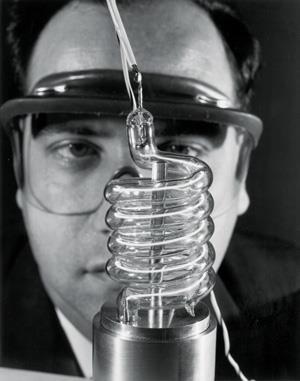
Take the invention of laser, for instance. When the tech was first invented back in the 1960s by Theodore Maiman, it was dubbed as “a solution in search of a problem”.
It wasn’t immediately obvious what a coherent source of light was really for — but after years of research, lasers now make up an integral part of various industries, from healthcare to manufacturing.
High risk, high returns
Even if a deep tech venture identifies a real-world problem that its IP can solve, taking these novel technologies from lab to market requires substantial capital to support their commercialisation — from building factories to support hardware-centric technologies and purchasing highly refined, expensive equipment and lab spaces to obtaining regulatory approvals, just to name a few.
Since most deep tech companies are built around a fundamentally new and unproven technology, they carry a higher risk as compared to average ventures. These innovations are most likely tested in a lab or research centre, and early results often do not provide a guarantee for scalability and success as these results are derived in a controlled environment.
Consequentially, many deep tech founders are likely to face challenges while building their products — the technology risk will not be eliminated until later in the process, increasing the possibility of the venture’s failure.
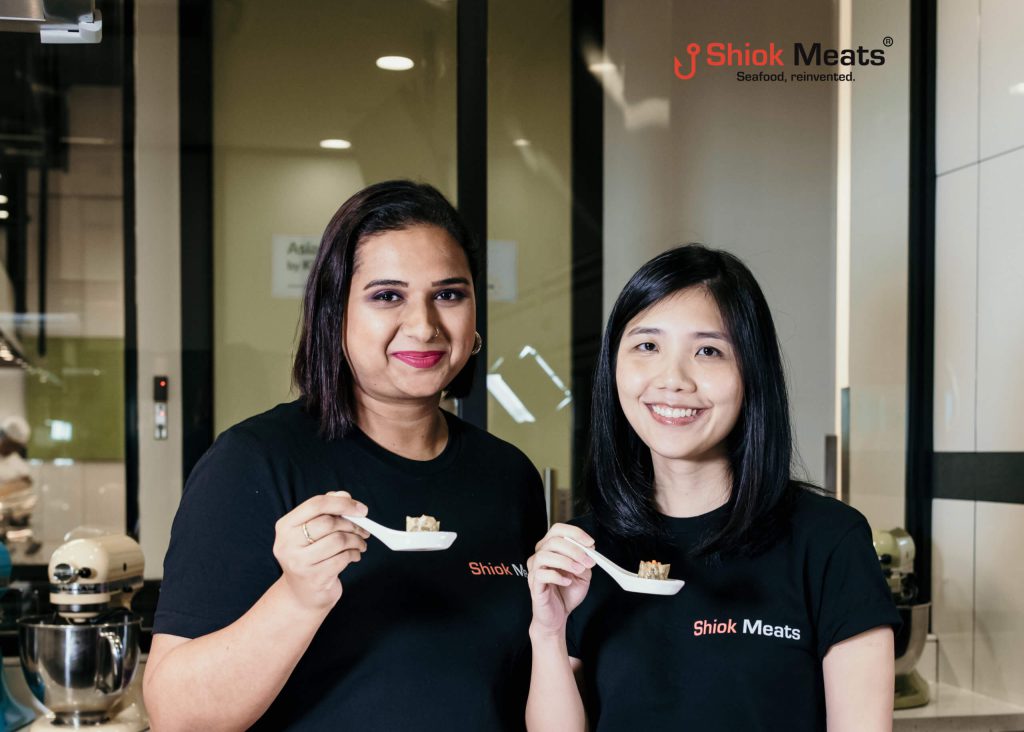
Cultivated meat startup Shiok Meats, which was once touted as one of Singapore’s rising food tech startups, faced similar issues.
In fact, its co-founder, Sandhya Sriram, admitted in a lengthy LinkedIn post that 90 per cent of the company’s experiments cultivating seafood end up failing as it struggled with scalability. Since its inception in 2018, the startup has yet to be able to successfully scale crustacean stem cells into production.
The complications and uncertainties that can arise in scientific R&D for these deep tech startups can also be a push factor for investors, causing them to be more wary about funding these ventures.
Consequently, a funding gap referred to as the “valley of death” arises, presenting a unique financial challenge for entrepreneurs between research invention and commercialisation.
However, if a deep tech startup can overcome the “valley of death”, it could deliver outsized returns over an average venture investment. Microsoft, Nvidia, and Google were all deep tech startups in the beginning — these companies required higher capital and carried higher risks, but today, they stand as prime examples of the remarkable success deep tech startups can achieve.
Singapore lacks venture building talents
In addition to these challenges, the availability of talent — both in terms of venture building and technical expertise — plays a pivotal role in the successful commercialisation of the novel technologies produced by deep tech startups.
Venture building talents can grow and propel a startup to success, while technical talents focus on the nitty-gritty, operating the behind-the-scenes and driving innovation in deep tech startups. These talents complement each other, ultimately leading a business to greater heights.
However, as the world faces a global talent shortfall, the scarcity of these talents is increasingly becoming a major pain point for deep tech startups across the globe. By 2030, there will be a global human talent shortage of more than 85 million people — if left unchecked, this talent shortage could result in about US$8.5 trillion in unrealised annual revenues.
This shortfall is especially pronounced in Singapore, given the city-state’s small population. In fact, Singapore is ranked as the third-most “talent-starved” country among 40 countries, with 84 per cent of the city-state’s companies reporting shortages.
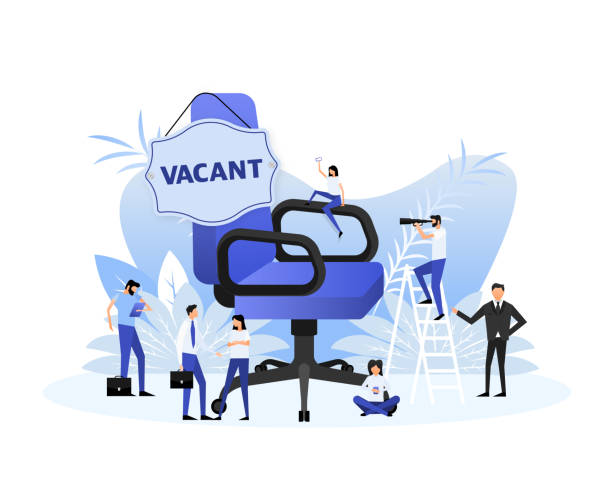
Even for countries where talent shortages are not as apparent, scaling a deep tech startup is hard enough as it is. Take Stanford University, the top producer of startup founders, as an example.
At an MOU signing between Temasek, the National University of Singapore (NUS) and Nanyang Technological University (NTU), Professor Ho Teck Hua, the President of NTU, revealed that Stanford University has about 13,500 inventions and disclosures over a 50-year period.
Of the 13,500 inventions, only one in five generate money, and only one in 100 have a chance to generate a revenue of US$1 million or higher. As a whole, only three have managed to generate a revenue of more than US$100 million, and one of these startups is Google.
On the other hand, while Singapore has a vast number of innovations — with NTU and NUS having a combined amount of 4,000 inventions and disclosures — the city-state generally lacks venture building talent.
Imagine a professor like me. I don’t know how to [build] a venture, I want to be nerdy and techy. We [professors] are terrible at building ventures.
– Professor Ho Teck Hua, President of NTU
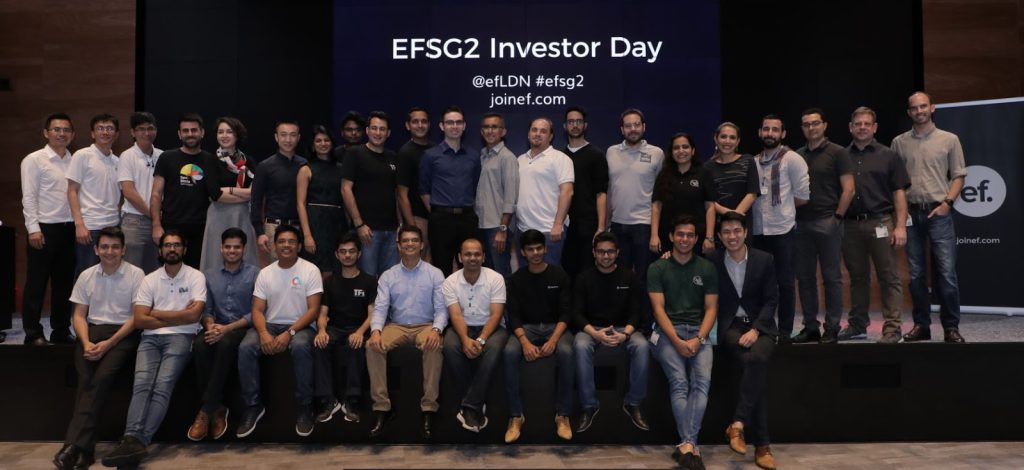
Back in November last year, talent investor Entrepreneur First (EF), which builds deep tech startups from scratch by matching aspiring entrepreneurs with each other, pulled out of Singapore after citing a lack of deep tech talent across the city-state.
According to Tech in Asia, an entrepreneur who was part of EF’s earlier batches said that the company was trying to get 50 to 100 participants in its 12th cohort, but by that time, it had already “exhausted all the good founders in a tiny country.”
Singapore’s efforts to bolster the deep tech ecosystem
Recognising the pain points of deep tech startups across the city-state, Singapore has continually invested in building its research and innovation ecosystem through a series of national R&D plans since the 1990s.
Back in 2016, the city-state launched SGInnovate to catalyse and attract funding for early-stage deep tech investments. Through SGInnovate, founders of deep tech startups can access a plethora of resources and tap into a a global pool of talents to bolster their startups.
Aside from this, under the S$25 billion Research, Innovation, and Enterprise (RIE) 2025 plan, Temasek will be pumping S$1 billion a year into funding the development of deep-tech innovation across a variety of domains.
To further accelerate the creation of deep tech startups from NUS and NTU’s pipeline of research, Temasek, NUS and NTU have also recently signed an MOU to jointly commit S$75 million in a pilot programme.
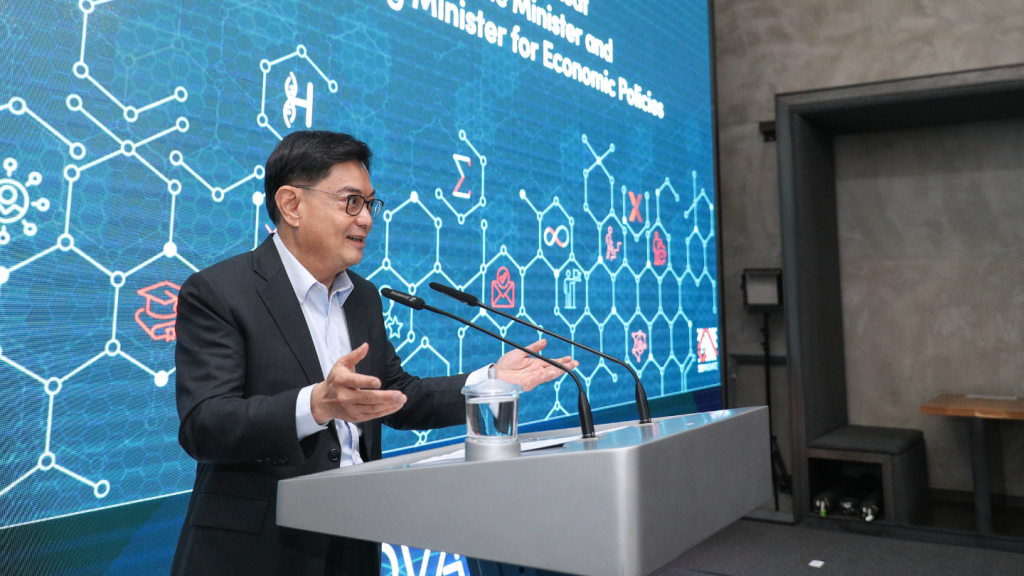
During a speech at the launch of the SGInnovate Deep Tech Talent Central earlier this year, DPM Heng Swee Keat shared that deep tech holds great promise in solving humanity’s biggest challenges and improving lives.
So far, Singapore’s commitment to deep tech has paid off, especially during the pandemic as the city-state was able to tap on its expertise in biomedical sciences to quickly develop diagnostic test kits.
The COVID-19 pandemic has reinforced our conviction in investing in innovation and deep tech. Deep tech will play an even bigger future role in addressing the many global challenges, including Disease X (the next big virus outbreak), climate change and ageing.
– DPM Heng Swee Keat
As we look ahead, it is clear that Singapore’s continued investment in innovation and deep tech will be pivotal in addressing future global challenges. With its commitment to fostering talent and pioneering solutions, Singapore stands poised to lead the way in shaping a brighter and more technologically advanced future for us all.
Featured Image Credit: Shutterstock
Also Read: Temasek, NTU and NUS jointly invest S$75M to support deep tech startups in S’pore
Croissant meets flower tea at this new Melakan pastry shop founded by a chemist & a baker
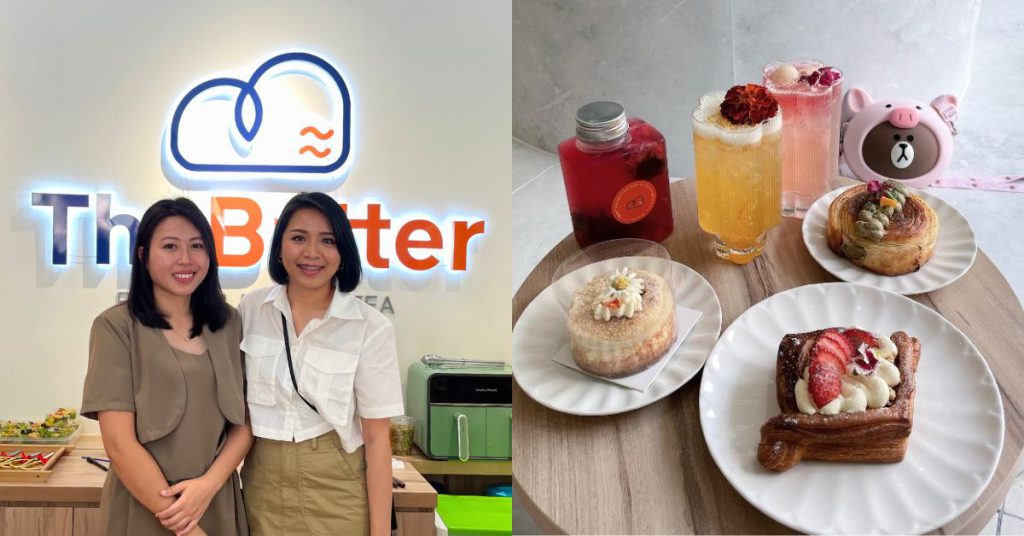
A new café has popped up in Melaka’s Jonker area by the name of The Butter. Although The Butter is a new business, it’s actually founded by the owners of two other businesses in Melaka—TéGather and CroissXCoffee.
Established in 2020, right before the pandemic, TéGather is a flower tea brand with a location in Kota Laksamana. On the other hand, CroissXCoffee is a croissant pastry shop in Melaka Raya opened just last year.
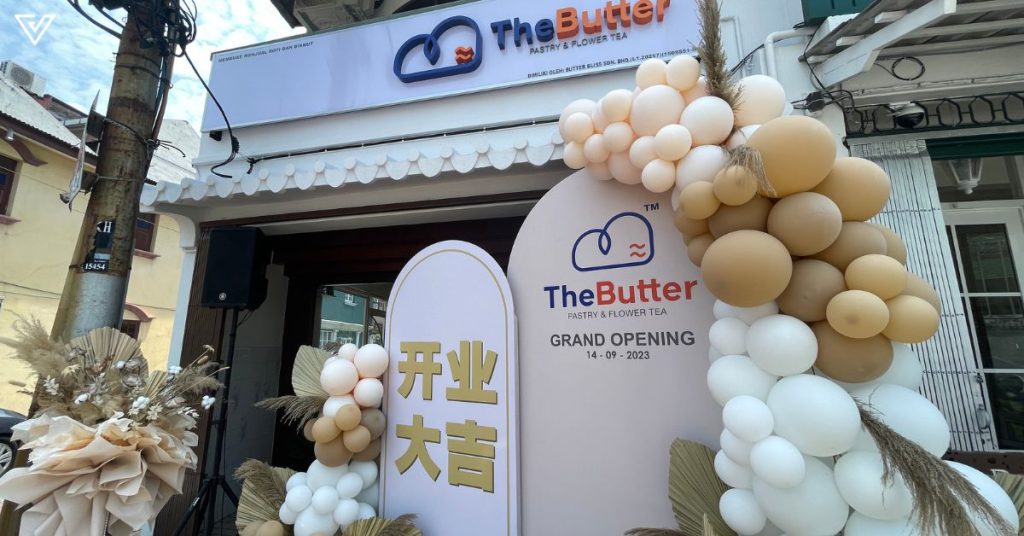
The founder of TéGather is 29-year-old Sally, who has a background in the chemist field, while Janvier is the woman behind CroissXCoffee.
Janvier, at 35, has amassed years of experience in the baking field, having worked in the personalised cake business prior to CroissXCoffee.
Combining the two fields, these two women came together to open The Butter, which had its grand launch on September 14.
Experts of their own fields
While they may be business partners now, they actually started out as patrons of each other’s businesses.
One thing led to another naturally, and the two women began talking about the idea of pastries paired with flower tea, believing this combination may be the spark the market needs.
Croissants have become bakery and café staples nowadays, and are oftentimes enjoyed with coffee, a pairing even reflected in CroissXCoffee’s name and branding.
“We found out that the combination of pastry and flower tea is very new in this market, and we started to notice that the customers nowadays not only enjoy food but also need spaces for their inner peace,” the duo shared with Vulcan Post.
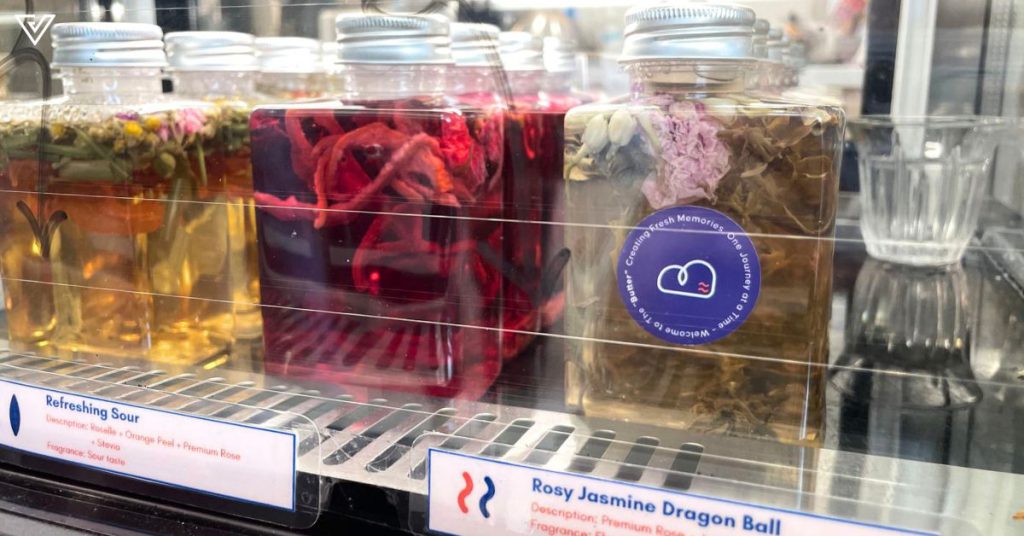
Thus, Sally and Janvier decided to bring their respective expertise to the table.
Sally, who pursued her bachelor’s degree in pure chemistry, had worked in a variety of chemistry-related jobs, from an F&B internship to a role in a pharmaceutical company.
The inspiration for TéGather came from her trip to Hong Kong in 2018. Here, she learnt of the flower tea culture, something she wished to bring back to Malaysia.
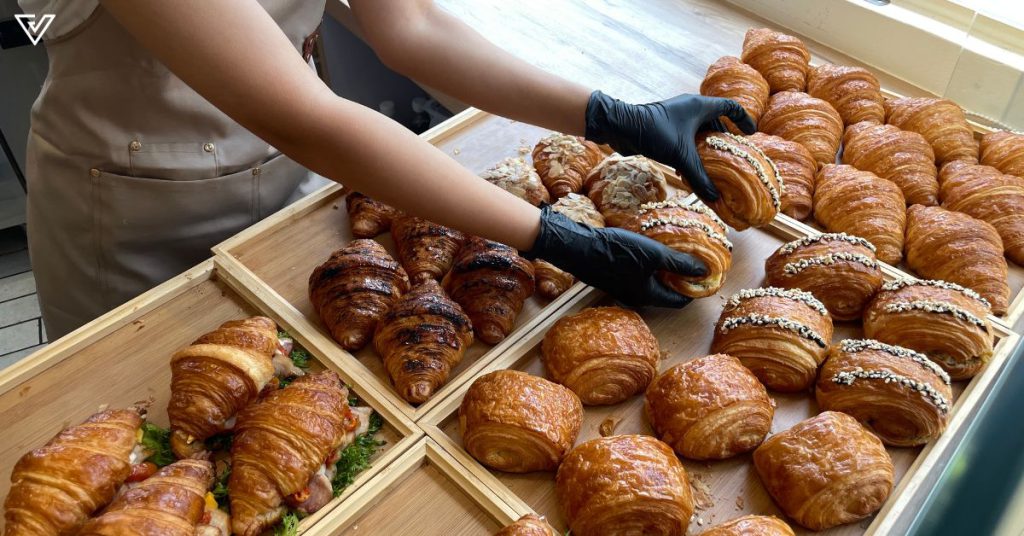
“I found out that there are varieties of flower tea that haven’t been explored in Malaysia,” she said. “Malaysians don’t know much about the culture of drinking flower tea, and they don’t even know that there are so many artificial and chemical pesticides in certain teas.”
When she started her own business, it was integral for her to get them tested through an international testing standard known as SGS (Societe Generale de Surveillance S.A.). She shared that it took a month to pass the tests and cost around RM300+ for a single test.
Janvier has been involved with food since she was young, having learnt how to bake traditional kuih from her mum.
After she became a mum herself, she began baking birthday cakes for her own children—a hobby she realised could be turned into a business.
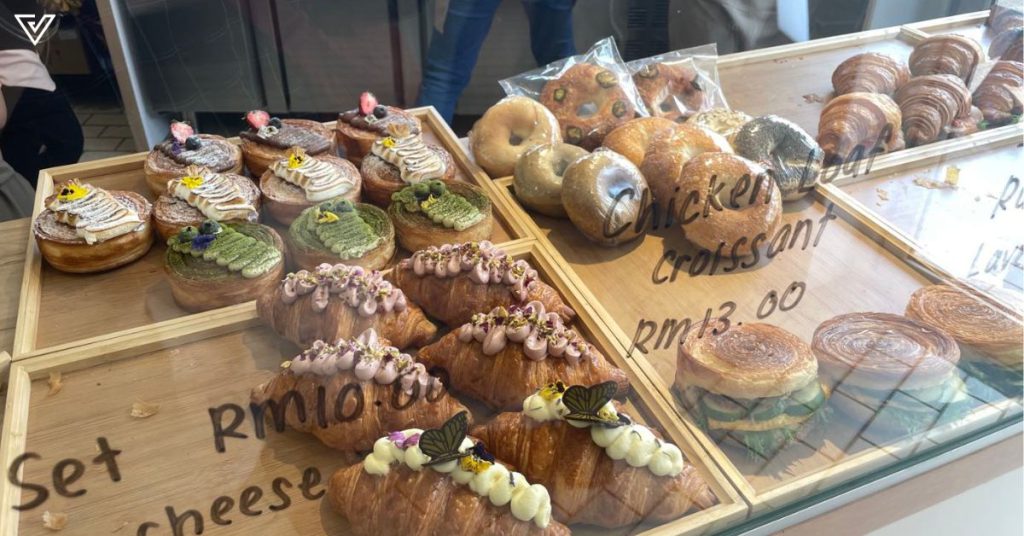
In 2022, she pivoted from the cake business to CroissXCoffee because she wanted to spend more time with family.
This is because the peak season for cakes is usually during special and festive seasons, which meant she would have to sacrifice her own family time to fulfil orders.
A synergetic effort
Both Sally and Janvier have their own reasons for starting their businesses, but they share similar visions—to create a comfortable and cosy environment for their patrons.
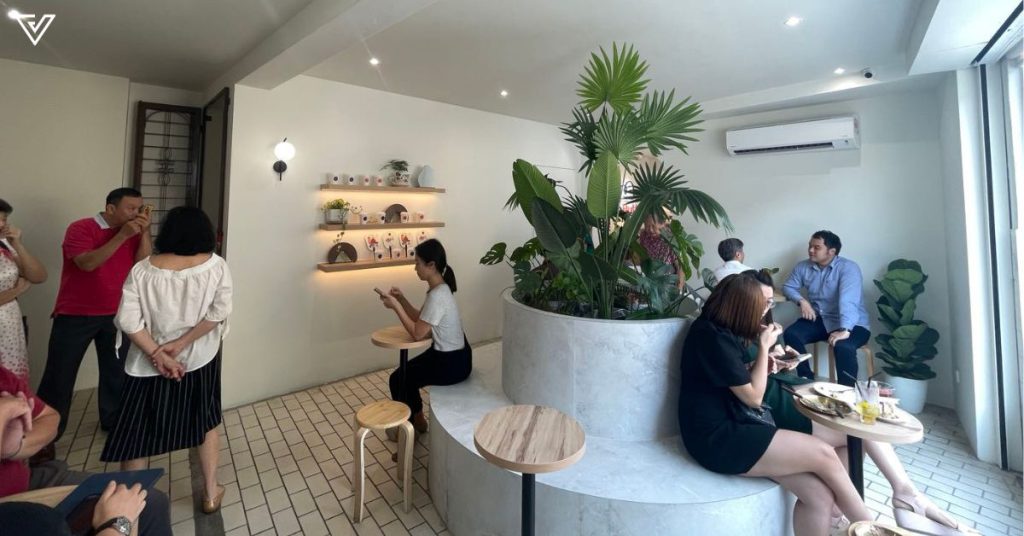
“But the main reason that brought us together is because two of us, our idea, our move, and our concept are very close to each other, especially when it comes to girl’s power,” they shared.
However, it would’ve been easier just for them to do a collaboration, perhaps sell each other’s products at their respective stores, rather than go all-out and kickstart a new venture.
When asked about that, the duo shared, “At this age, it is not suitable to be working and fighting alone (单打独斗).”
“We believe this market needs a new brand and a new spark that can create a new combination with a ‘third space’ that’s suitable for me time and we time.”
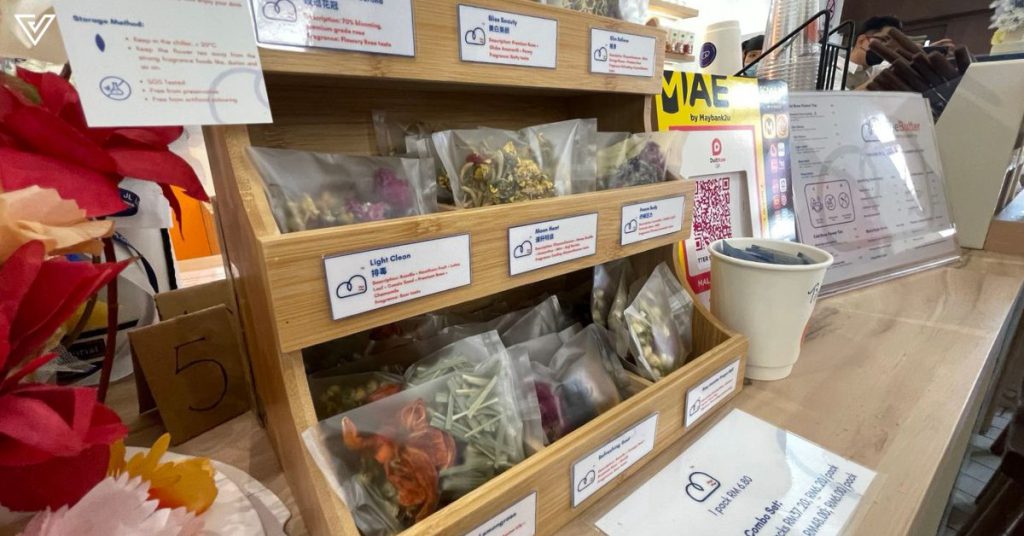
A third space refers to a communal place that isn’t the home (first space) or work (second space).
Buttering it up
Visiting The Butter on its grand launch, the café was packed with a bunch of people and delicious-looking offerings. Not just your regular croissants, The Butter carries unique flavours and fillings, including sandwiches.
The combination of flower tea and croissant aside, an edge The Butter has is its prioritisation of using fresh ingredients. The team bakes its goods fresh every day, and flower teas are also brewed only when an order is received to ensure they are as fresh as can be.
Each batch of tea leaves and flowers are also only brewed once. Other than hot tea, The Butter has cold brewed teas available alongside other dessert offerings. Additionally, they have a Flower & Coffee series with drinks such as Jasmine Americano, Rosy Latte, Lavender Latte, and more.
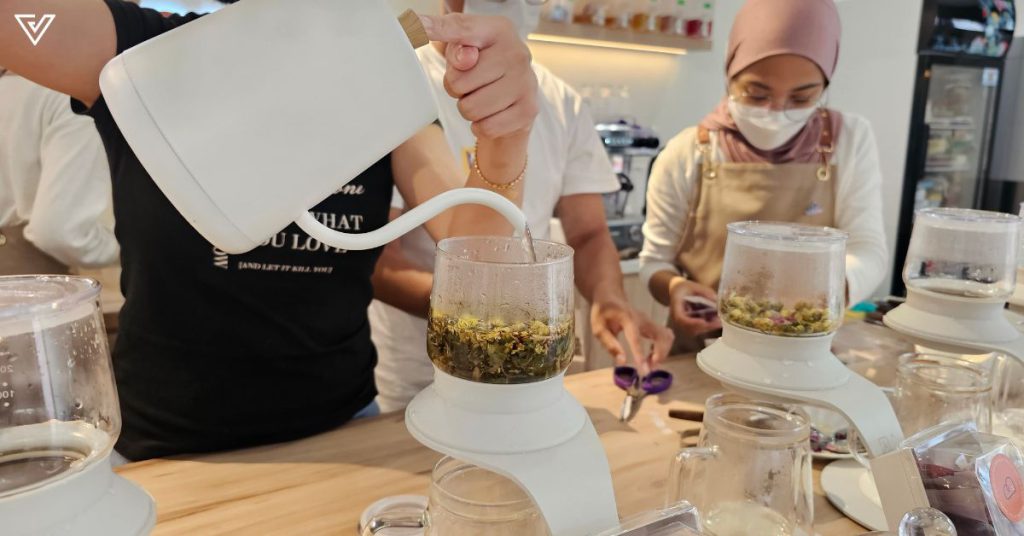
This is just the beginning for The Butter, and Sally and Janvier have big plans for their business. They’re already thinking of having more branches, starting with three shops, then eventually more branches across Malaysia.
On top of that, they’re planning for a licensing module for The Butter.
“We wish one day, we can bring the energy and vibes to all ladies and everyone that we can work out anything we want as long as we really want,” they shared. “We have the dream to push out this brand and concept.”
Also Read: These Perak bros turned their dad’s bunga kantan chilli sauce recipe into a full-fledged biz
Featured Image Credit: Vulcan Post / The Butter
Her parents disagreed with her fashion pursuits, now this M’sian owns a label & beauty brand

You would be overly simplifying things if you consider Kittie Yiyi to just be an influencer. Certainly, she is one, what with her tens of thousands of followers online. However, she’s much more than that, and she has a portfolio to show for it.
But if there’s anything that ties her myriad of roles together, it would be her love for fashion.
Hailing from Puchong, Kittie has always dreamt of becoming a fashion designer.
“There was no doubt about going to a fashion design course after I finished high school,” she told Vulcan Post. “My parents didn’t agree with this course, but I insisted or else I wouldn’t go for further studies.”
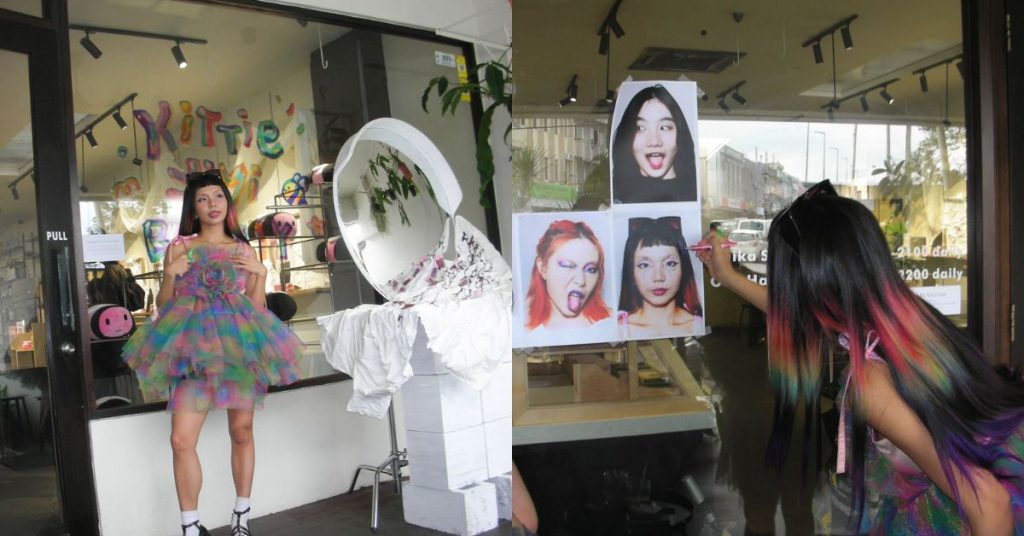
Yielding to her desires, Kittie’s father actually borrowed money from her aunt to fund her course, as they can be quite costly, Kittie shared.
“That’s when I promised myself not to let my dad down.”
And considering where she is today, it’s safe to say that she has proven she was right in her decision to go down this route.
From blogger to stylist to an entrepreneur
It’s understandable why her parents hadn’t been supportive at first, though. Kittie herself pointed out, “Obviously, fashion is not the most stable industry. But there’s a lot of potential to grow and to educate.”
Becoming a blogger happened quite organically for Kittie Yiyi, she said. It started when she and her colleague decided every Friday was a “dress-up day” to the office.
“We took pictures and uploaded them to our own blog. We talk about our outfits and that’s where I started to get noticed by the public, probably because of my crazy outfits,” she mused.
In 2014, she released her debut collection, and by the next year, she had a runway show in NanJing Fashion Week. Then in 2016, she had a runway show in Vancouver Fashion Week.
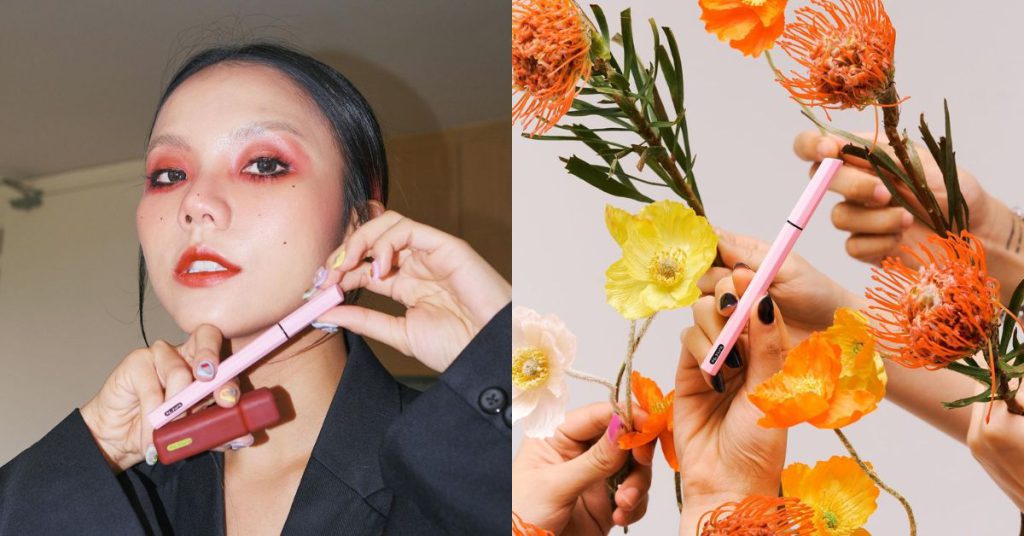
By 2017, she had her first showroom in KL, and in 2018 her products were sold in China.
Throughout these years, Kittie has witnessed various trends and continual growth in the local fashion industry.
She shared, “The fashion scene has changed a lot since the day I joined. The fashion scene in Malaysia was a lot more conservative back then, right now people are more open to different styles and people are willing to try on themselves.”
However, as it did for many people, the pandemic changed everything.
“Clothes had become so unnecessary during the pandemic, everyone was just more health-conscious,” Kittie pointed out. “It hit me and the business hard. I wanted something that can sustain my business and can relate to my life.”
With that, she started a new brand—Kittie Yiyi Beauty.
Redefining beauty
“I born w’ eyeliner,” a line in Kittie Yiyi’s Instagram bio reads. True to that, if you scroll through her posts, nary a picture of her is without her signature eye look.
Because of that, the first product that was launched by Kittie Yiyi Beauty was the eyeliners.
Characterised by pink packaging and fine tips, there are six liner colours in total, each of them carrying unique names such as Little Women, Big Sis Energy, Make A Wish, and more.
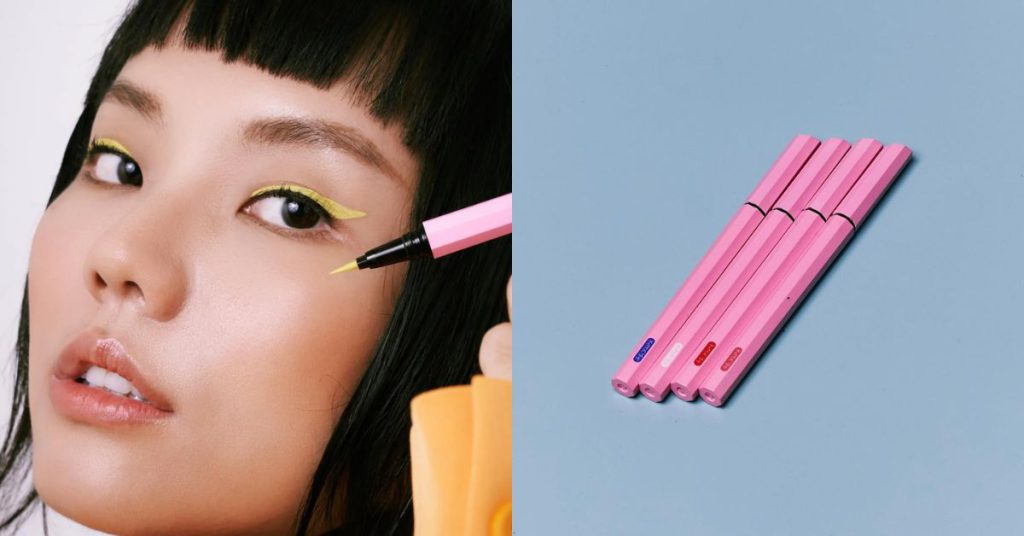
Particular about the quality, it took about three to five rounds of prototypes for each product before they were finalised.
The makeup brand has since launched liquid lip products, too.
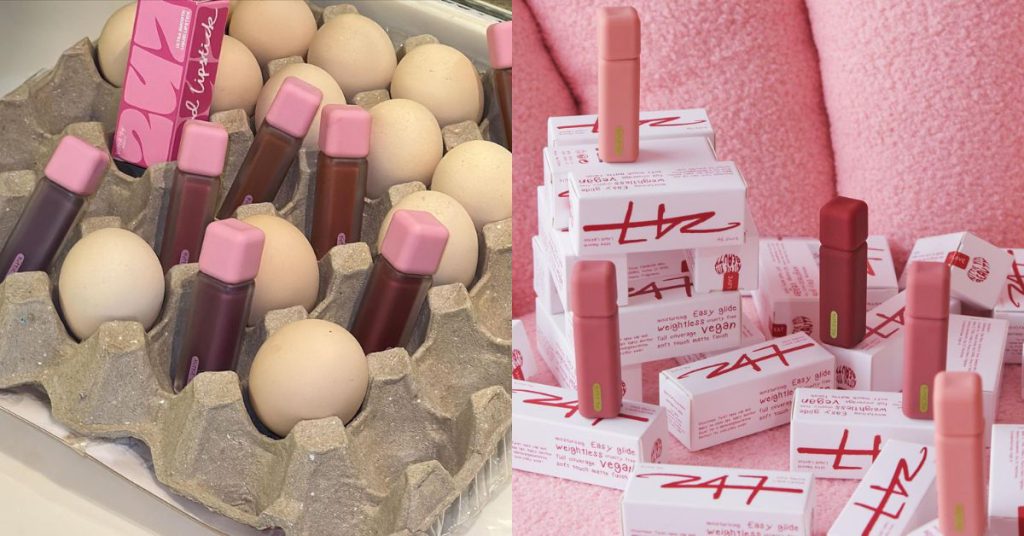
Makeup is quite the big market, though, with both local and international brands and products easily available in Malaysia. Compared to the other brands, Kittie Yiyi Beauty still manages to stand out, in part thanks to the entrepreneur’s own identity as well as the products’ identity.
“Definitely, we have more creative value than the commercial value right now,” Kittie admitted. “We care a lot about our products’ personality. I mean we wish to give every product a life, a character, a name.”
“I want to bring my value to my consumer. The joy of making yourself beautiful by makeup. I want to encourage people to be who they want to be. I want people to feel joy just like how kids draw and paint freely without any worries on how people judge their artwork. “
A night in Kittie’s shoes (and dresses)
One of the newest notches in Kittie’s belt of ventures is Rent With Kittie, a clothing rental service that lets people rent pieces from Kittie’s collections.
“People always come to me and say, ‘Hey, I love your brand so much!’ but they won’t buy a thing because of how loud the pieces are and the slightly high pricing,” Kittie explained.
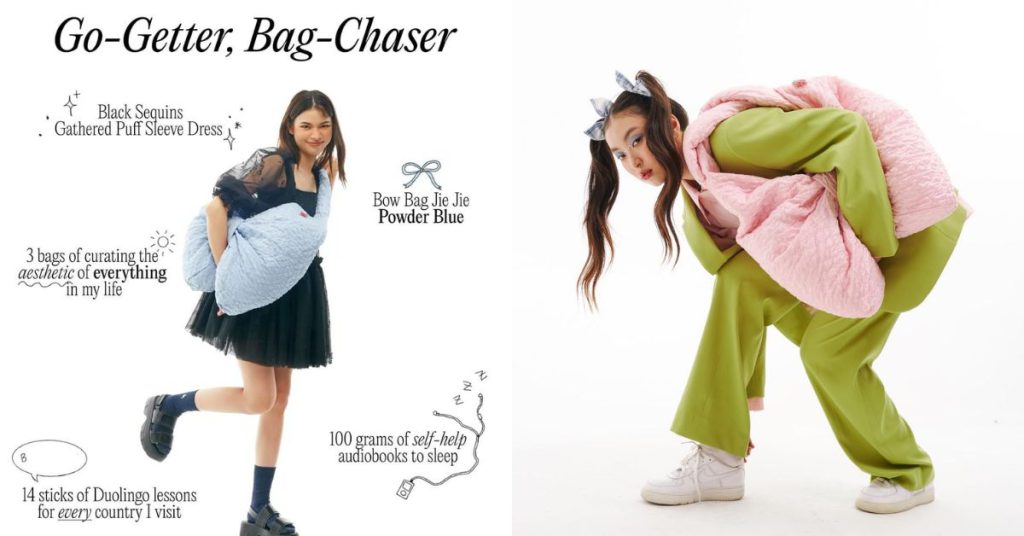
On top of that, due to the unique nature of her pieces, the clothes may only be worn one time and spend the rest of its lifespan in one’s wardrobe.
Thus, Kittie decided to offer a new experience, turning all her archive collections into a rental service.
“I want them to own Kittie Yiyi and feel happy to have it even for a night,” she expressed.
On balancing the numerous hats
One way to describe Kittie’s journey so far may be “organic”. She never expected to be wearing so many different hats and balancing so many roles, but everything happened so naturally that she felt she could only keep moving forward.
“In the beginning of being an influencer and designer, it was really hard for me to focus and juggle,” she shared. “Most of the people were advising me to choose only one career in the earlier years. I couldn’t make a decision until now.”
So how does Kittie do it all, from being a designer to an influencer, as well as an entrepreneur?
In the early days, Kittie said she sacrificed a lot of her time to take on influencer jobs, as those were able to provide a faster return compared to her brand.
“As I need to sustain my life, I need to really work hard in my influencer area. It was everything to me as an influencer because it helps fund my brand too,” she pointed out.
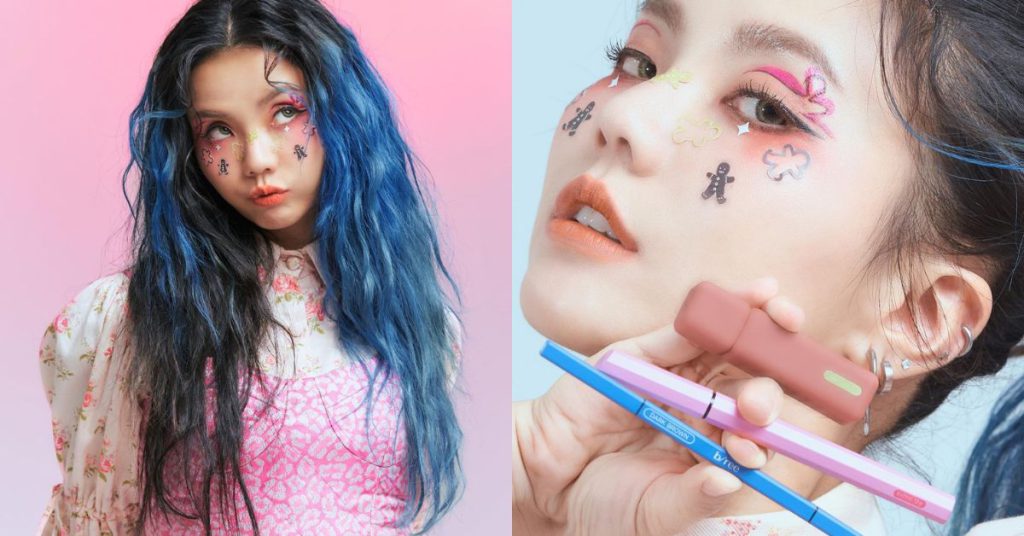
Now, she sees it both as part of bigger cycle.
“If I weren’t an influencer, I wouldn’t be able to even fund my brand in the beginning,” she said. “If I weren’t a designer, I wouldn’t have added value to my influencer career. I’ll try harder to balance both roles everyday.”
To balance everything, Kittie gives herself a very strict schedule to follow and has become even more disciplined. However, having that structure doesn’t mean that the entrepreneur is rigid.
“I should say with the ever-changing world we are in now, we can’t always stick to one plan,” she mused. “The plan is dead, the human is living. When the opportunities hit, catch it and groom it.”
Growing the brand sustainably
Another role that Kittie has to balance is being an employer and leader. Kittie now leads a team of eight, including herself, whereby everyone is involved in all the brands.
“The biggest challenge being an employer is having the stress of looking at the business growth and branding part,” she said. “But to my employees, I’ve always appreciated how much effort they have put into my brands. They are part of the reason I wanted to bring this brand to another level.”
Having spoken to other creatives, a challenge I’ve heard of from them included growing and scaling their own brand. This may be because it’s challenging to stick to your artistic guns versus going for something that is more commercial and mass-friendly.
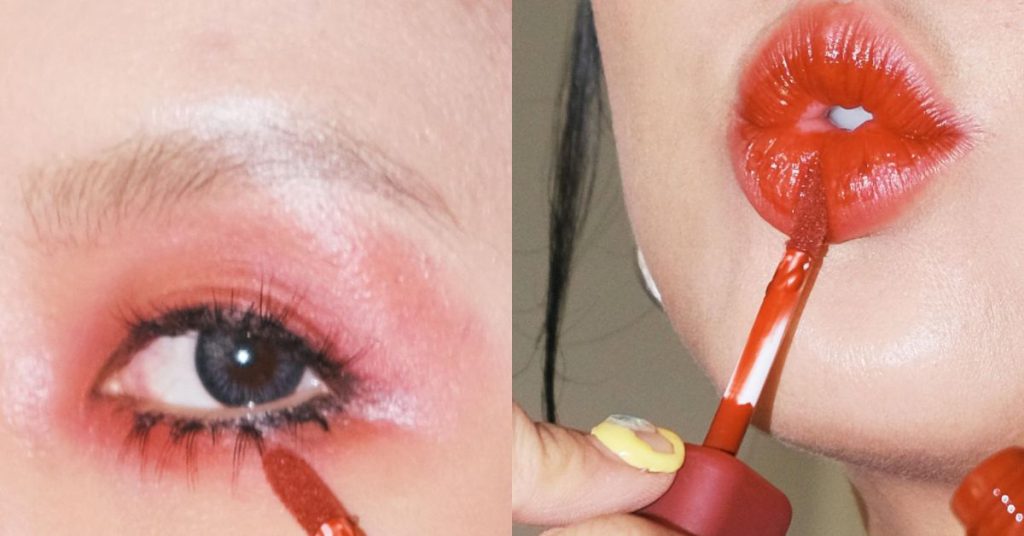
This is something that Kittie resonated with.
“How good it is if I don’t have to think about the profit side,” she mused. “I always wanted to make everything crazy and loud. Unfortunately, reality doesn’t work this way. After many years, I’ve learnt to balance the value between commercial and creativity.”
While it was difficult to make these compromises in the beginning, the designer has since learnt to be more aware of what’s relevant to society while staying authentic to her personal style.
“Mix them together and definitely you can find your way to profits,” Kittie concluded.
With this balance, Kittie hopes to grow her brand and make it a well-known one locally in the next five years. After that, she hopes to take her creations to an international level, and help the local scene to grow together.
Also Read: Here’s how M’sian SMEs can get 1,000GB of high-speed data at RM50/month to boost their biz
Featured Image Credit: Kittie Yiyi
Scoop of success: This NTU grad ditched engineering to open own gelateria – now runs 2 outlets
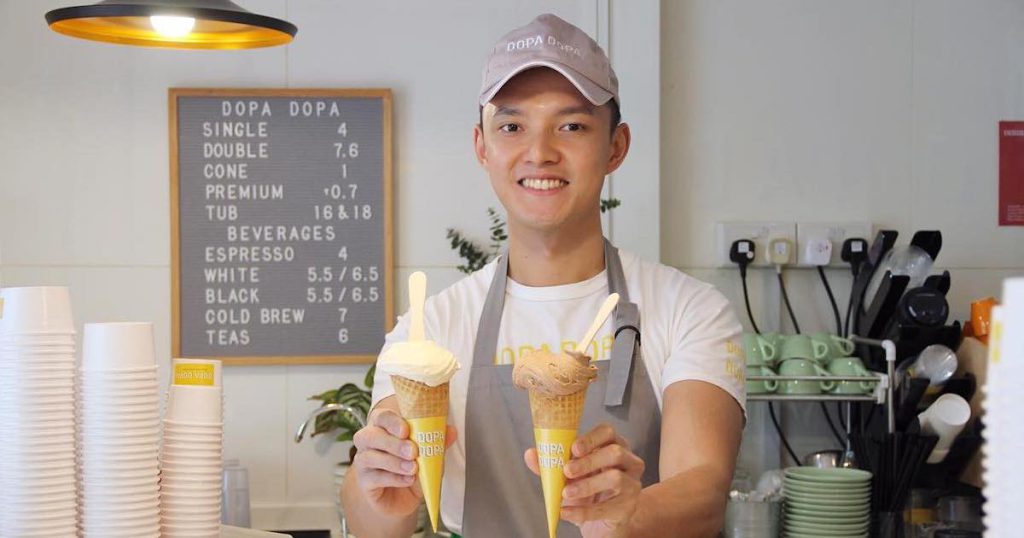
A recent study conducted by the Gaven Institute of Medical Research in the United States found that people have a high tendency to search for high-calorie and sweet foods when they experience high levels of stress.
Combined with the never-ending heat in Singapore, many Singaporeans often look for cold desserts such as ice-cream and gelato to beat the heat and de-stress. As the saying goes, stressed is desserts spelt backwards.
Amongst the many ice-cream parlours and gelaterias, DOPA is one of the more popular gelaterias in Singapore, with many food and lifestyle publications and reviews giving them high praise for their nut-based gelatos.
Leonard Ong, the founder of the gelateria, graduated with a degree in Materials Engineering from Nanyang Technological University (NTU). However, he soon realised that he did not want to pursue engineering as a career while working as an intern in a local engineering firm, where he found the office work to be mundane.
I chose to join [the] Food and Beverage (F&B) [industry] because I recognised that I’ve been a very hands-on person since young, and am better at craftwork like baking, drawing, and design & tech. Being hands-on and the opportunities to interact with people attracted me to join [the] F&B [industry].
– Leonard Ong, founder, DOPA
His interest in the industry landed him his first F&B-related job as an operations management executive at the now-defunct cafe On The Table, which was owned by the same people behind Lola’s Cafe. He then worked in The Loft Cafe – which has since closed – and Lowercase Cafe, with each position lasting for one year.
In 2018, he decided to strike out on his own and invested S$150,000 into opening his first outlet, named DOPA DOPA, located at South Bridge Road.
According to Leonard, the name “DOPA” is derived from the word “dopamine”, which is commonly known as the “feel-good” hormone responsible for inducing pleasure when released. “I wanted a space where people, regardless if they are staff or customers, are happy to be in,” said Leonard.
They sold out on their first day
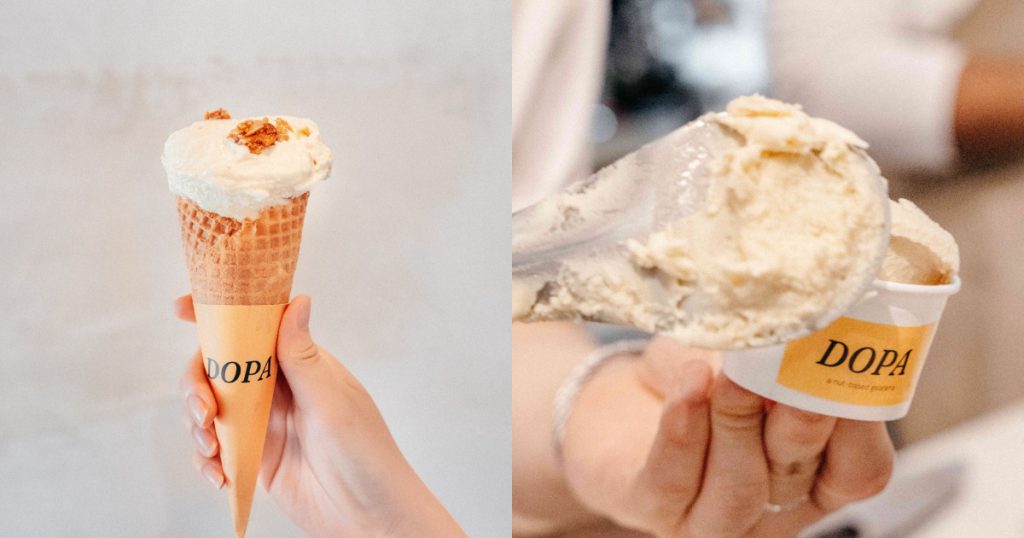
One might wonder, with so many local ice-cream parlours and gelaterias in Singapore such as Birds of Paradise and Udders, as well as stiff competition from big-name ice-cream brands like Ben & Jerry’s, what sets DOPA apart and makes it special?
According to Leonard, all of DOPA’s gelatos are made in-house with natural ingredients, and the recipe undergoes monthly changes to achieve the ideal flavours and textures. These gelatos are stored in Pozzeti display freezers, which are traditional gelato containers from Italy. Interestingly, the gelato warms up as the staff scoops it out of these containers, enhancing its flavours.
On the flip side, Leonard shared that by not using ingredients that are commonly supplied such as nut pastes, it made their Research and Development (R&D) process more challenging.
[We chose to] move away from common supplier ingredients like supplier nut paste and use our own pistachio paste for our signature roasted pistachio gelato, and figuring out the best texture for scooping using a spatula took a lot of time and exploration.
– Leonard Ong, founder, DOPA
The team first started experimenting by creating unique flavours that were not commonly found, such as their Green Tea Toasted Rice and Watermelon Mint sorbet. They also incorporated flavours that are familiar to Singaporeans, such as Coconut Pandan with Gula Melaka.
However, just like any experiment, there were unfortunately some bold flavours that did not make the cut.
“I have done Laksa, Chicken Rice and Chilli Crab gelato too. They went down the drain shortly after being churned out from the gelato machine,” said Leonard.
Nonetheless, their commitment to unique flavours and growing social media presence managed to attract many patrons, leading them to sell out on their first day of business.
Took four years to breakeven, and COVID was a major obstacle
Working in the F&B industry in Singapore is never easy, and a common problem that F&B establishments face is the scarcity of manpower. Leonard shared that this has been an ongoing challenge since the inception of DOPA.
“Finding the right person [and] remunerating them well, while juggling costs is a constant challenge,” said Leonard. He also emphasised the importance for businesses to be resilient – always be on the lookout for new talent and adapt to find a better balance.
The COVID-19 pandemic added another layer of complexity for Leonard. He mentioned that the pandemic was an extremely challenging period as he had to swiftly adapt to government policies and revise their operations. In response, DOPA began offering takeaways and deliveries of their gelatos by the pint, both in-store and online.
It was also through the pandemic that he realised that having a strong and dependable team is paramount to DOPA’s survival. Leonard said he felt supported by his part-time employees, who played a significant role in helping the business push through difficult times.
“There were very slow months, but moving cautiously at a comfortable pace helps us sail through these periods,” he shared.
He added that he re-invested a large amount of the profits into new inventories and minor renovations during the early stages of their operations to increase overall efficiency. Despite COVID-19 slowing down their growth, DOPA has managed to eventually break even after four years of operations.
Slow and steady wins the race
The F&B market in Singapore is extremely saturated, with many businesses opening and closing in the past few years. Leonard revealed that the secret ingredient to long-term sustainability is to constantly look out for new trends and ensure a positive environment for his employees.
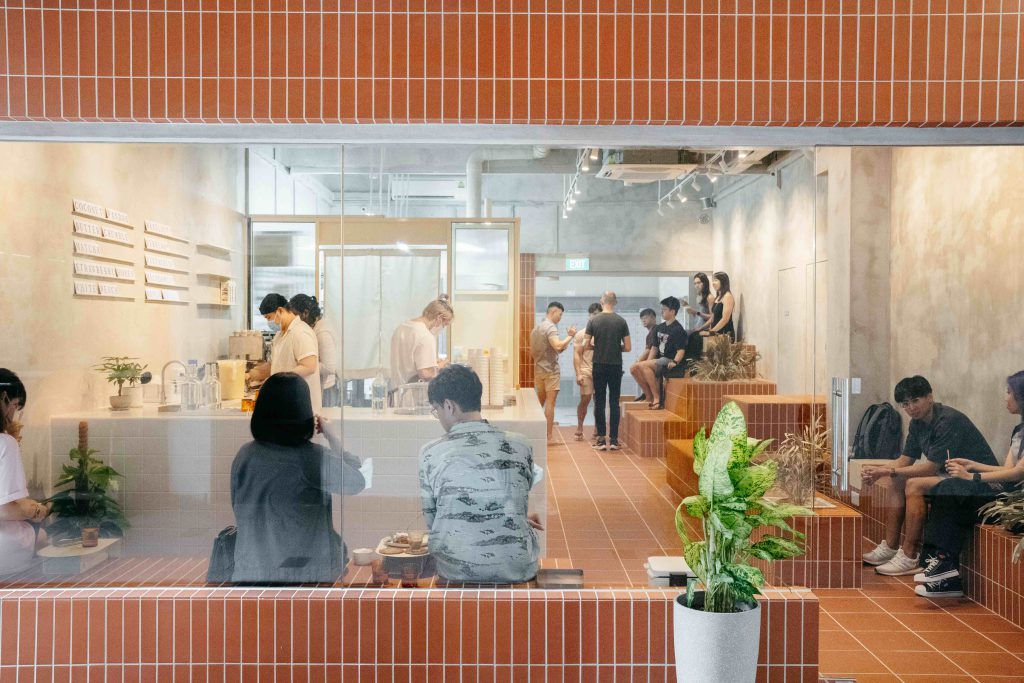
In September last year, DOPA opened its second outlet named “DOPA” at Tanjong Pagar Plaza – a milestone that Leonard is proud of achieving after five years of operations. However, Leonard shared that he has no plans for further expansion, as he will be focusing on building stronger teams and a solid foundation for the existing business.
Acknowledging the growth that DOPA has achieved since its inception, Leonard expressed a commitment to proceed cautiously during challenging times and taking well-calculated risks. This approach has helped DOPA earn a 20 per cent increase in revenue since 2022.
Looking ahead to the next five years, Leonard hopes that DOPA will become a brand renowned for its nut-based gelato and homemade nut paste. He stressed the importance of setting a sustainable pace that aligns with the comfort and capabilities of his team, rather than be fixated on specific numerical goals.
“With a strong team of good people, I believe we can push and cover longer distances,” concluded Leonard.
Featured Image Credit: DOPA
Also Read: S’pore label Love, Bonito opens largest outlet in HK – sees triple digit growth in H1 2023
Grab might acquire foodpanda’s Asian operations for S$1.5 billion, according to German report
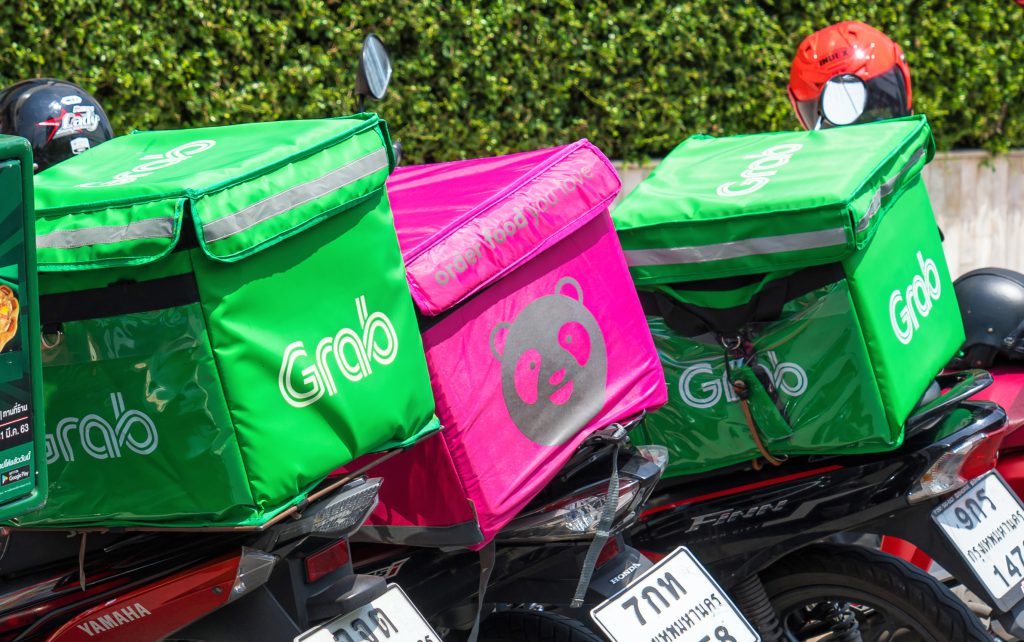
Disclaimer: Any opinions expressed below belong solely to the author.
Delivery Hero, German-based parent of food delivery service foodpanda, has reportedly confirmed preliminary talks to offload its Asian operations to a prospective buyer, according to a report by a German business weekly The Wirtschaftswoche.
Final price might reach over €1 billion, or about S$1.5 billion, and would include foodpanda’s branches in Singapore, Cambodia, Malaysia, Myanmar, Philippines, Thailand, and Laos. Operations in Bangladesh, Hong Kong, Pakistan, and Taiwan would remain with the current owner for the time being.
Market grab
Rumours point to Grab as the interested party — which, of course, would be no surprise given the service overlap with its GrabFood deliveries, as well as the company’s ambition to create a superapp for its Southeast Asian users.
Buying out a competitor would increase its dominance while reducing marketing expenses on customer acquisition. The company, however, has yet to confirm the reports and no official statement has been released as of writing.
That said, the purchase would make Grab a virtual monopolist in Southeast Asian food deliveries, where it already commands 50 per cent of the market (or more), challenged only by foodpanda, which holds around 30 to 40 per cent, depending on the country. Buying it out would make Grab the ‘Google of food deliveries’.
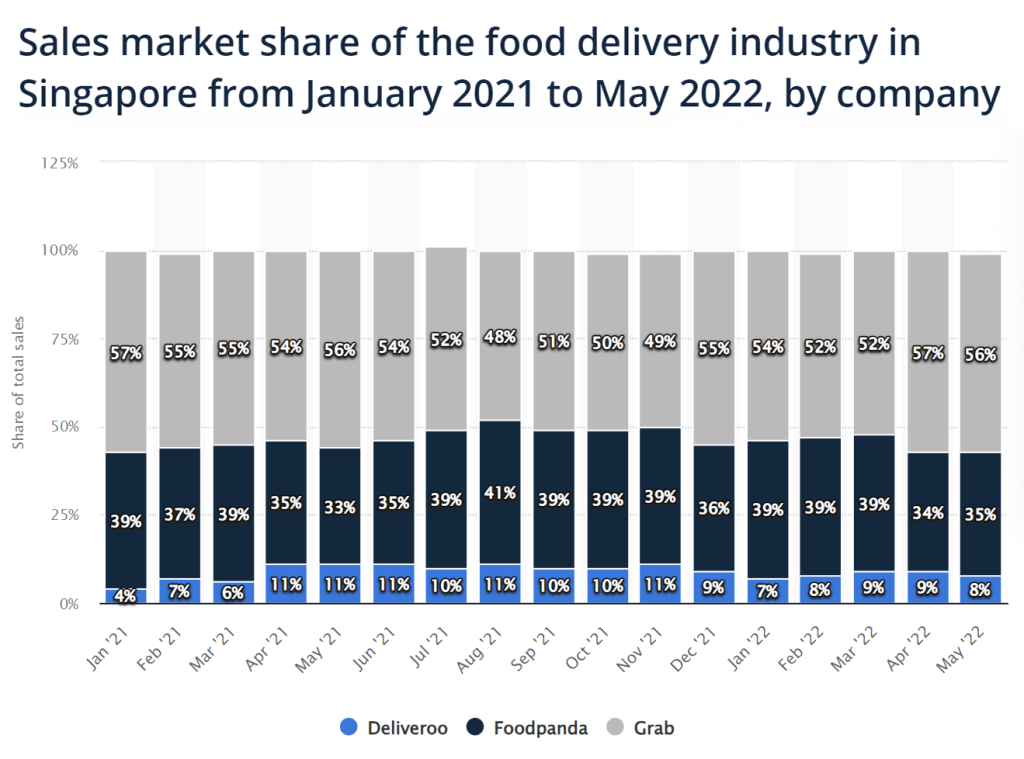
This is why the sale makes a lot of sense for Delivery Hero as well.
Like similar companies globally (including Grab itself), it has failed to turn a profit ever since it listed on the German stock exchange in 2017 and is seeking easy money at a time when raising capital is expensive, if not downright impossible, due to high interest rates and bearish sentiments on stock markets around the world.
At the same time, constant competition with Grab in Southeast Asia is draining the company without producing results. Why fight a losing battle? Cash out and move on.
It’s a repeat of the buyout of Uber in 2018 — an inevitable consolidation in an industry which has been burning money providing expensive incentives to drivers and users alike.
This sort of competition can, ultimately, be destructive to the market and innovation in it, like Peter Thiel and Blake Masters argued in their book “Zero to One”. War of attrition benefits nobody and money can be better spent developing new services.
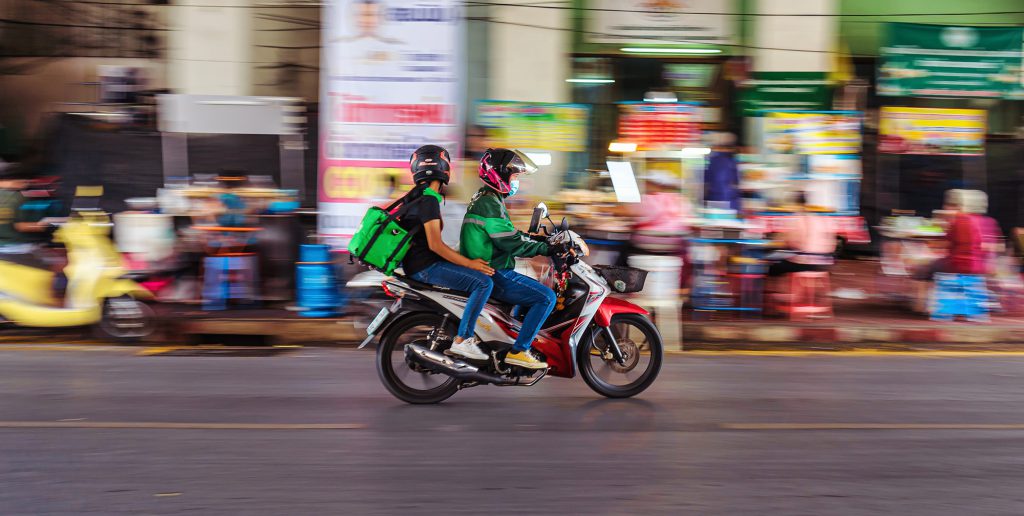
And while Grab itself is yet to make a profit, it has approximately S$6.7 billion in cash and liquid investments.
It is currently spending approximately S$350 million in sales and marketing expenses per year. If it can cut it in half, it could pay off the acquisition in less than a decade — though likely much sooner, given that it would also allow it to promote its financial services to new users, in one clean sweep.
Achieving profitability is important, but bear market provides unique bargains, if you have the money to invest. This might be one of them, if Grab plays it right.
Featured Image Credit: Tzido / depositphotos
Also Read: Shop and save: foodpanda partners DFI, yuu to expand grocery offerings with under 1hr delivery
OpenAI launches third version of DALL-E, which might make prompt engineers jobless already

Disclaimer: Any opinions expressed below belong solely to the author.
OpenAI has just announced the third version of its AI-powered image generator, DALL-E, which has seen less publicity and traction over the past year, having been surpassed by solutions such as Midjourney or open-source Stable Diffusion.
The updated image generator is coming to GPT Plus subscribers in early October, with a host of new features.

Obviously, the company behind ChatGPT had to offer something that its competitors can’t, and that is exactly what it is promising with this update.
Most importantly, unlike others, DALL-E is finally integrated with ChatGPT. This is a big deal, as good understanding of input text is necessary for achieving a desired visual output.
And since OpenAI is currently the leader among developers of large language models, it is only natural that it would (and should) use its prowess to make image generation better in terms of output quality and ease of use, so that users don’t have to try to learn how to speak to the model before it can produce what they actually want.

This is known as “prompt engineering” — a practice of combining certain words and key phrases to nudge the AI in the desired direction, rather than simply describing what you want in a natural manner.
Well, according to OpenAI, this won’t be necessary with DALL-E 3, as it is expected to be a lot better at understanding the sense of written language, as presented in this promotional video:
Promptly fired?
Prompt engineering has become one of AI buzz phrases of the past year, leading to creation of new jobs in the field, but it looks like progress is so quick that newly-employed prompt engineers might already be forced to look for something else to do, given how human-like interactions with AI become.
On the other hand, this might also be a major junction, which is going to see different solutions follow their own paths, which may still require considerable human expertise.

This is because DALL-E 3 is coming with a handful of limitations. It allows artists to opt out from having the model trained on their data. It also prevents users from asking the model to produce artwork in a style of any living artist — likely a hedge against possible lawsuits, which are already being filed against OpenAI and other AI companies.
Direct, mass-market competitors, like Midjourney, may be forced to follow a similar path but free, open-source solutions like Stable Diffusion won’t need to, since anybody can run a local instance of the service and train it on any images they like.
Doing so will, of course, require some knowledge, especially as it’s unlikely that SD will be able to match ChatGPT’s proficiency in handling conversational language.
In other words, it might be the beginning of market fragmentation, that we see in other IT services and products, depending on the degree of flexibility one needs.
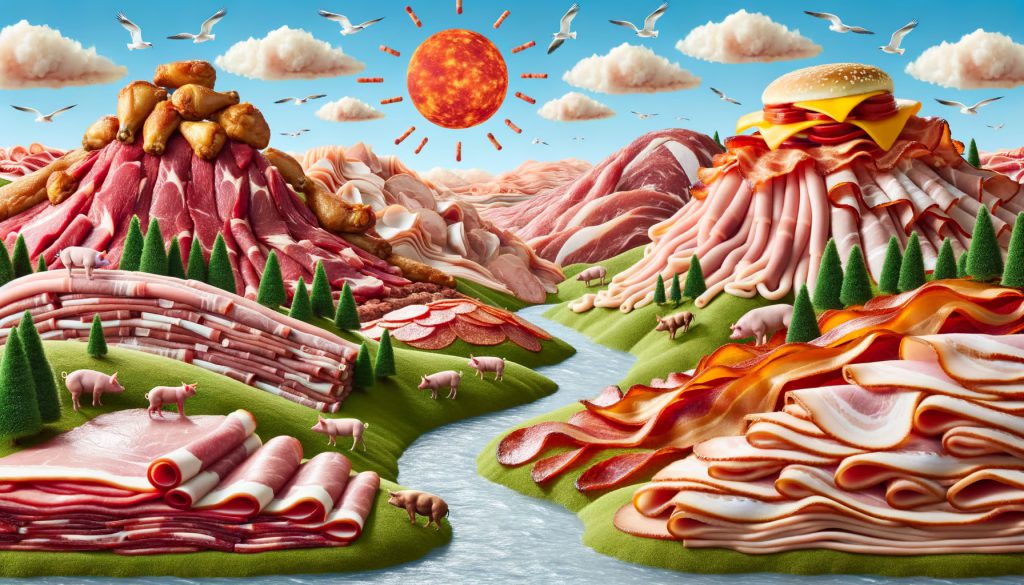
A rookie user who would like to just get some pretty pictures will be more than happy with something that works well enough out of the box, while designers (in a multitude of fields) may require the ability to fine-tune their models — including by having minute control over their prompts — at the expense of ease of use.
In fact, this divergence may only grow with time as AI is, ultimately, just a tool that’s supposed to serve our needs. For all the generative AI art flooding the internet over the past 12 to 18 months, the real value is in output that has practical use. This means that in most professional cases, it has to be perfect or near-perfect.
Think of designing assets for 3D projects, video games, or movies. Or product and packaging design. Or highly accurate, choreographed photography scenes, including realistic people, real-life locations, angles, focal lengths of lenses used, times of day, seasons of the year, and so on.
To convey a desired message for professional use, creators already have to have a lot of control and intelligent approximation coming from a large, closed-source, pre-trained model, is unlikely to be good enough.
It is also where those new jobs, that AI advocates are promising, might be created. Lighting engineers, colour graders, photo retouchers might soon be replaced (unless they upgrade their own skills) by someone who can speak in a language that smart software requires to produce what is required of it.
Plain, natural language may never be accurate enough — just think of all the times you told someone something and they didn’t quite understand you. Well, the same is bound to keep happening with computers. No matter how intelligent they become, they can’t read your mind and there’s only so much information a conversation can contain.
Which is why instructing them in more direct, specific, technical terms may actually be a better way to achieve what you want, when precision is key.
After all, the most we can achieve with conversational AI is parity with humans, not clairvoyance (at least not until we begin implanting chips into our brains). And as long as that is the case, there’s bound to be plenty of work left for us, even if it requires constant adaptation to changing conditions.
Featured Image Credit: Dall-E 3 / OpenAI
Also Read: Pilots be warned: AI-powered humanoid robot can fly a plane just by reading its manual

